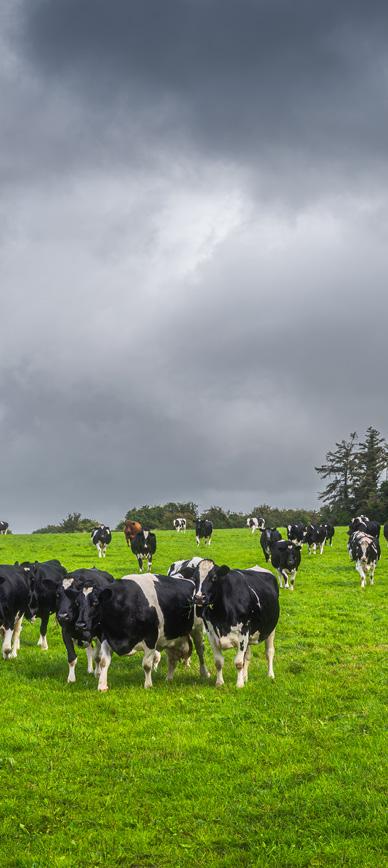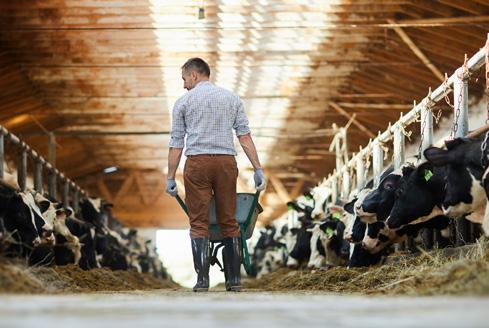
3 minute read
Disruptors
from Milk Producer
by MilkProducer
LOOKING SIDEWAYS TO EMBRACE DISRUPTORS
By Lilian Schaer
THERE ARE TWO CATEGORIES OF DISRUPTORS facing the livestock sector and the industry is encouraged to look outside of itself for solutions that will help it be on the right side of coming change.
“We can look at disruptors in two ways: those that are nature-based events, and those that are based in innovation or social change,” says Dr. Deb Stark, Board member at the Canadian Agri-Food Policy Institute and former Ontario Deputy Minister of Agriculture, Food and Rural Affairs. “The world is so intertwined, and the big disruptors come and hit you sideways, so we need to look within the industry and to others for solutions.”
Stark made the comments as the guest expert at the most recent Horizon Series webinar hosted by Livestock Research Innovation Corporation (LRIC).
Nature-based disruptors include animal or human diseases, such as Foot and Mouth Disease or COVID-19, as well as droughts, fire, floods, and extreme weather events such as blizzards, tornadoes, or hurricanes.
The livestock industry is used to dealing with disease threats, for example, both preventively and in response to outbreaks and emergencies. Widespread implementation of biosecurity measures in the dairy sector are an important example of proactive, preventive change driven by the industry.
Responding to disruptors that stem from technology or societal change, such as cellular agriculture, advances in automation, or consumer pressure for more welfare-friendly production practices is more complex. There is less need for immediate and collective action, Stark notes, and yet those who don’t act risk finding themselves on the wrong side of the disruption.
“Technology and the attitudes towards it are changing and some of the most interesting things are happening beside us,” she says. “In livestock, for example, we are moving towards gathering data on each individual animal instead of the herd or flock and developing precision management, which is coming from human medicine beside us.” Stark looks to the World Economic Forum’s annual risk report, futurist.com and the Betakit newsletter focused on Canadian startup investments to identify emerging trends with potential industry impacts.
When it comes to looking sideways, she believes Ontario agriculture is uniquely positioned with abundant opportunity at its doorstep
in the southern Ontario technology corridor. It includes the Waterloo Technology Triangle, Toronto Region Human Health and Sciences Cluster, and Canada’s Advanced Manufacturing Supercluster.
“More could be done to build those relationships. We often look to what the Guelph [agriculture] grads are doing, but what are the [University of] Waterloo grads doing, for example?” she says adding that although foresighting to anticipate future scenarios takes time and resources, the industry should put a greater emphasis on it.
LRIC has been leading the charge on behalf of the livestock industry to identify these emerging issues and disruptors, bring balanced perspectives to the discussion, and start to work collaboratively on the search for solutions rooted in research and innovation.
That includes its Horizon Series of whitepapers and webinars featuring guest experts, like Stark, to provide background on issues ranging from regenerative agriculture and water use to antimicrobial resistance, genomics and animal-free meat, dairy, and eggs.
Also helping LRIC keep its eye on the horizon are its Emerging Issues and International Advisory committees, whose members bring national and global perspectives to the table.
“These are all issues that are bigger than a single livestock commodity can handle on its own – both from the scope of the issues, as well as the fact that most organizations are busy worrying about the more immediate, but equally important ongoing issues that face their individual sectors,” says Mike McMorris, LRIC CEO.
LRIC’s Horizon Series webinars and whitepapers are available at www.livestockresearch.ca/white_papers.
This article is provided by Livestock Research Innovation Corporation as part of LRIC’s ongoing efforts to report on research developments and outcomes, and issues affecting the Canadian livestock industry.
DR. DEB STARK’S DISRUPTORS WATCHLIST
• Disease preparedness. Threequarters of new infectious diseases come from animals, so it is important to look at what could happen if livestock, poultry and humans are simultaneously at risk. • Water governance. As the world gets hotter and drier, water use is increasingly important.
• Bioengineering and cellular
agriculture. The ability to change or create genetic code could have farreaching consequences.

It’s more than your livelihood, it’s your life.
You deserve an advisor who really gets what’s on the line.

Rick Hamilton, CPA, CA 519.245.4690 | rick.hamilton@mnp.ca





